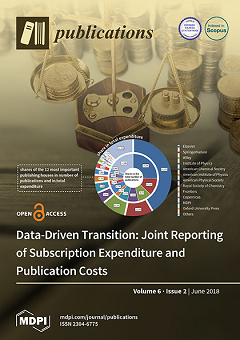Open AccessFeature PaperCase Report
Open Science Support as a Portfolio of Services and Projects: From Awareness to Engagement
by
Birgit Schmidt, Andrea Bertino, Daniel Beucke, Helene Brinken, Najko Jahn, Lisa Matthias, Julika Mimkes, Katharina Müller, Astrid Orth and Margo Bargheer
Cited by 9 | Viewed by 9399
Abstract
Together with many other universities worldwide, the University of Göttingen has aimed to unlock the full potential of networked digital scientific communication by strengthening open access as early as the late 1990s. Open science policies at the institutional level consequently followed and have
[...] Read more.
Together with many other universities worldwide, the University of Göttingen has aimed to unlock the full potential of networked digital scientific communication by strengthening open access as early as the late 1990s. Open science policies at the institutional level consequently followed and have been with us for over a decade. However, for several reasons, their adoption often is still far from complete when it comes to the practices of researchers or research groups. To improve this situation at our university, there is dedicated support at the infrastructural level: the university library collaborates with several campus units in developing and running services, activities and projects in support of open access and open science. This article outlines our main activity areas and aligns them with the overall rationale to reach higher uptake and acceptance of open science practice at the university. The mentioned examples of our activities highlight how we seek to advance open science along the needs and perspectives of diverse audiences and by running it as a multi-stakeholder endeavor. Therefore, our activities involve library colleagues with diverse backgrounds, faculty and early career researchers, research managers, as well as project and infrastructure staff. We conclude with a summary of achievements and challenges to be faced.
Full article
►▼
Show Figures





